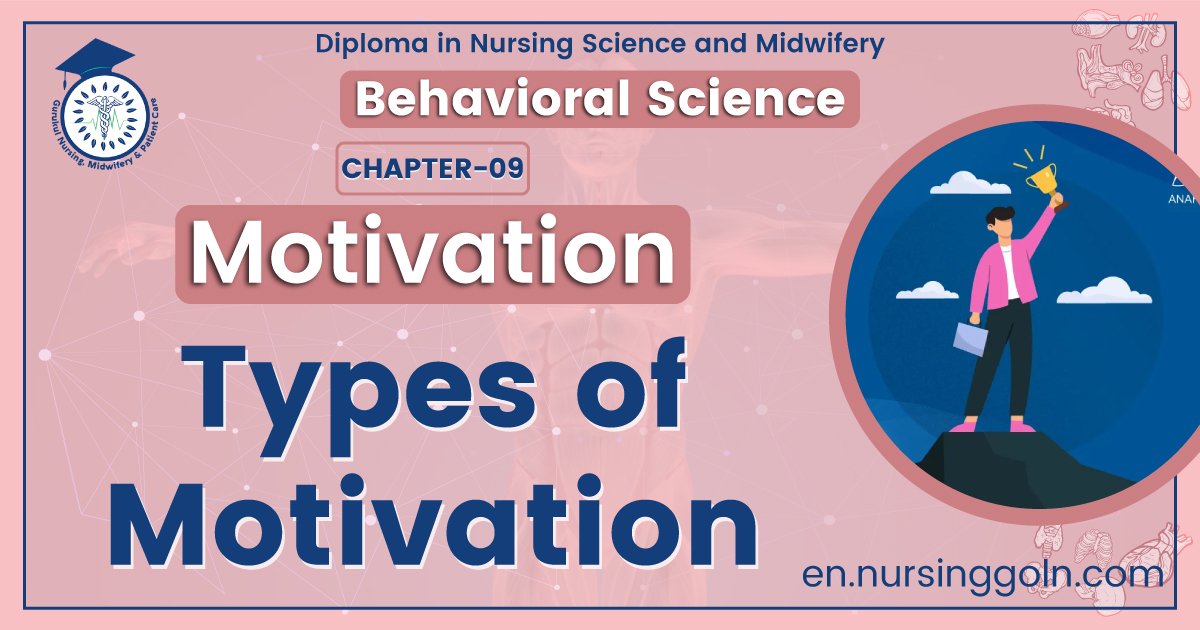Types of motivation – Behavioral sciences explore the cognitive processes within organisms and the behavioral interactions between organisms in the natural world. It involves the systematic analysis and investigation of human and animal behavior through the study of the past, controlled and naturalistic observation of the present and disciplined scientific experimentation and modeling.
It attempts to accomplish legitimate, objective conclusions through rigorous formulations and observation. Generally, behavior science deals primarily with human action and often seeks to generalize about human behavior as it relates to society.
Types of motivation
A. Primary, biological survival or basic. Due to changes in the body
- Hunger
- Thirst
- Avoidance of pain.
- Need for sleep and air
- Elimination of waste
- Regulation of temperature
- Sex
B. Stimulus,
- Activity
- Curiosity
- Exploration
- Manipulation
- Physical contact
C. Secondary, social or learned
- Achievement
- Affiliation
- Aggression
- Power
- Curiosity

(For EQ)
A. Primary Motives: Primary motives are essential for survival. They must be satisfied first before you can take up any other activity. Primary motives come to action when the physiological balance of the body is upset. This balance I is called homeostasis.
a) Hunger drive: When the food supply of the body has been exhausted, certain biochemical changes take place in the tissues of the body. This causes the stomach to contract which gives hunger pains. The hunger must be satisfied in order to help the body to return to a physiological balance or homeostasis.
b) Thirst drive: The tissues of the body lose fluid when fluids have not been taken in. As a result, the mucous membranes of the throat become dry and cause sensation of thirst.
c) Respiratory drive is the drive for air and oxygen. One cannot survive for long without a regular supply of air or oxygen. If oxygen is not supplied even for a short time, it is possible to experience brain damage, loss of memory and control over one’s body.
d) Sleep drive usually occurs at regular intervals for each person. When the body continues activities without rest or sleep for a long time, it is possible to experience confusion, inability to pay attention, droopy eyelids, staring, muscle tremors and increased sensitivity to pain. The body temperature and metabolism drop enough during sleep, saving up energy.
e) Drive for elimination of wastes: When the bladder or intestine become distended not with waste material, they cause pressure and discomfort. The person becomes restless until the waste materials are disposed off and pressure relieved.
f) Sex drive is considered a biological drive, since it is dependent on physiological conditions. Unlike hunger and thirst, sex is not essential for the survival of the individual but is necessary for the survival of the species. The initial drive to sex activity comes from nervous tensions within the body set up by sex hormones.
g) Maternal drive is a physiological motive. Maternal behavior is instinctive in nature. It is unlearned. Physiological drive causes maternal behavior. Maternal drive is caused by prolactin, a hormone secreted by the pituitary.

Personal motives/personal social motives depends on:
- One’s life goal
- Level of aspirations
- Interests
- Attitudes
- Force of habits
- Cunconscious motivation.
B. Stimulus motives: Stimulus motives are also inborn but are not necessary for survival. They include –
a) Activity,
b) Curiosity,
c) Exploration,
d) Manipulation and
e) Physical contact.
C. Social/Learned/Secondary Motives: Human beings are not only biological but also social. Therefore human behavior is activated by the following social motives:
a) Achievement motives
b) Affiliation motives
c) Aggression motives
d) Power motives
e) Curiosity motives
These are called social motives because they develop through relationship with people.

Read More….
